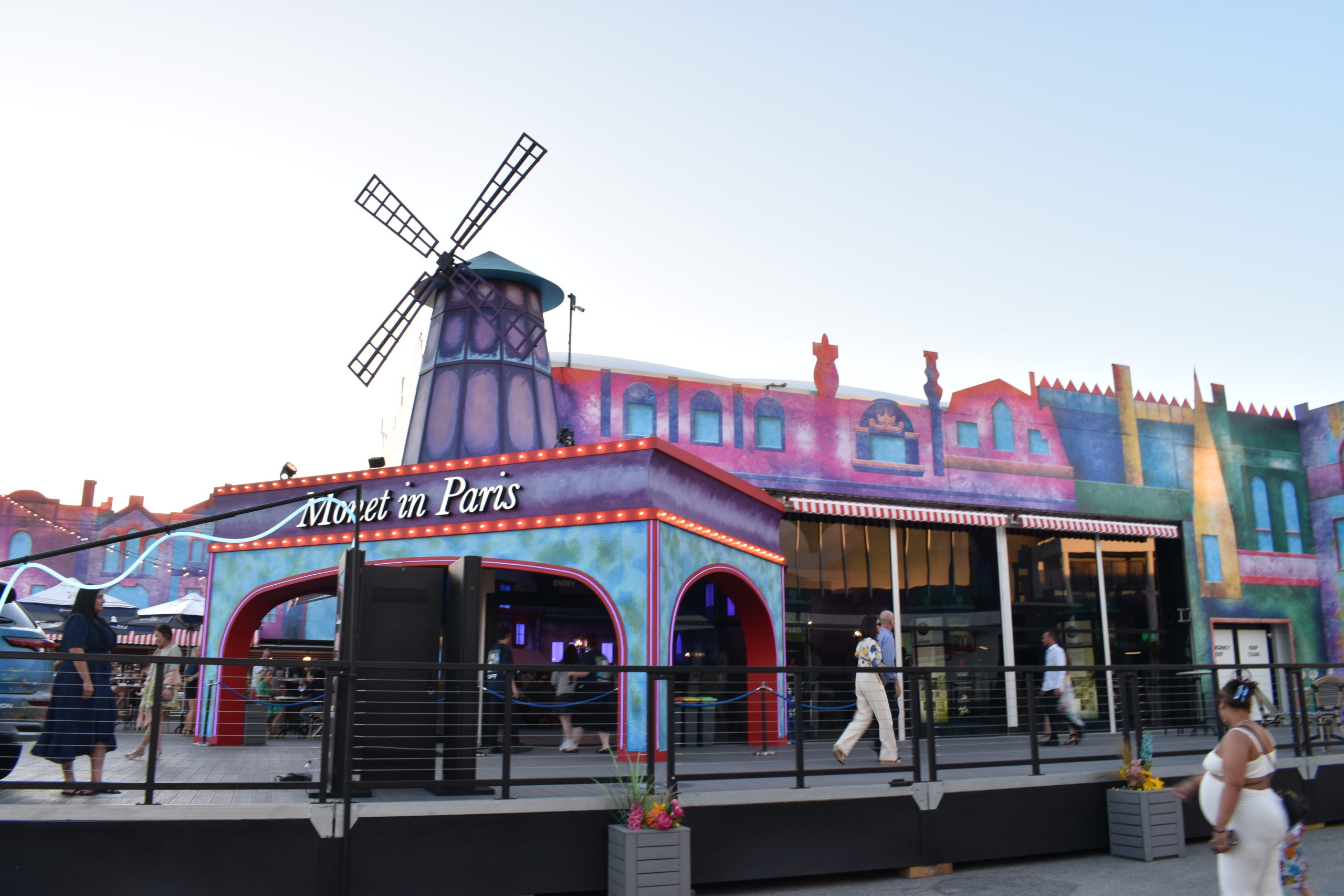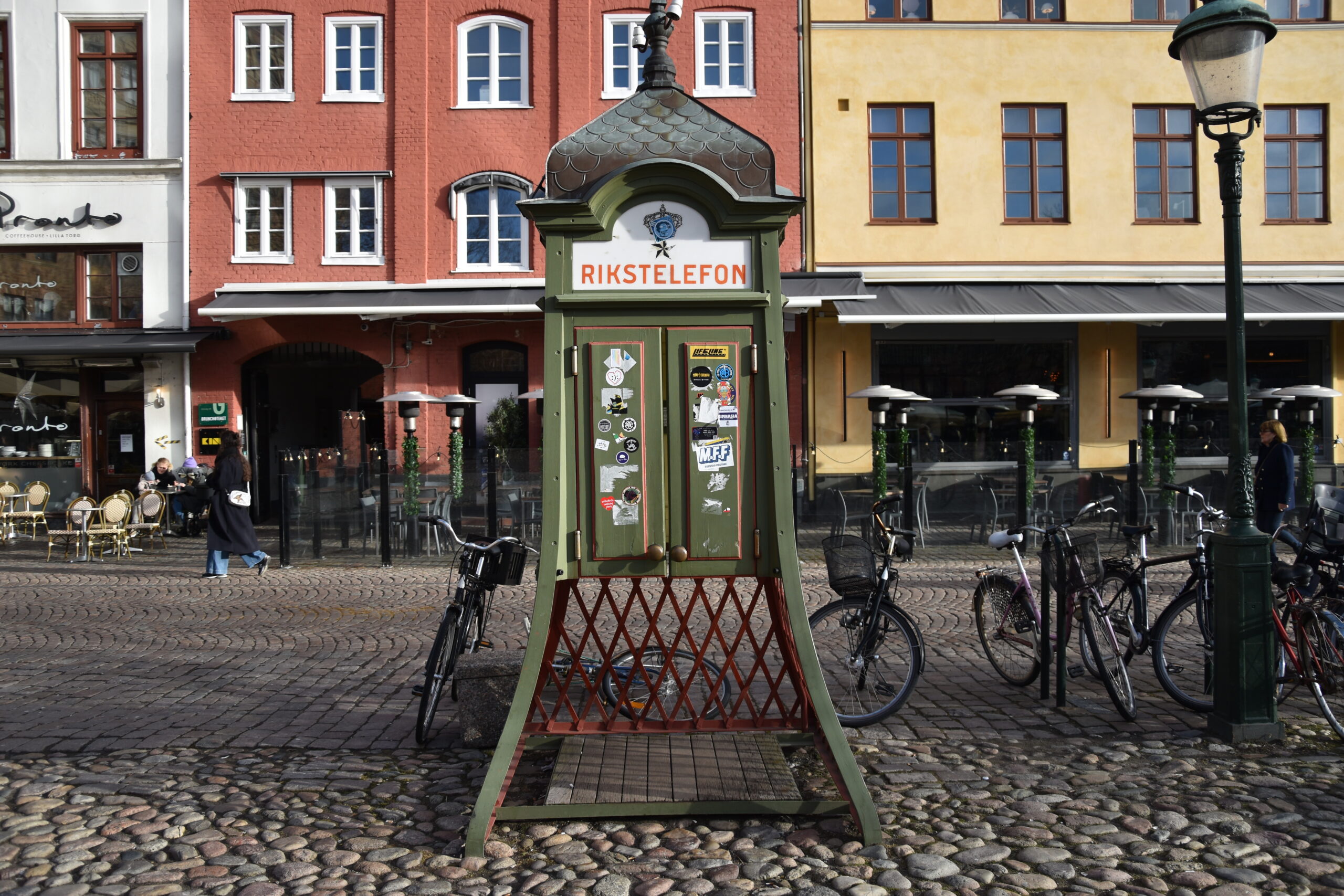Last Friday, I ambled down to what is currently Perth’s most Instagrammable location – Monet in Paris.
The installation is hosted at Crown Perth. It is extremely difficult to miss, given how it’s housed in a lilac replica of the Moulin Rouge, complete with windmill.
Monet in Paris is produced by the same company (Grande Experiences) who brought Van Gogh Alive to these shores last year. It purports to be a multi-sensory immersive experience spanning three concepts in Impressionist art: Metropolitan, A Day in the Life, and En Plein Air.
Metropolitan deals with the portrayal of the city of Paris, then undergoing a renaissance in culture and arts. A Day in the Life attempts to record contemporary Parisian life in all its facets. En Plein Air refers to the eponymous practice of completing paintings in the open air, which was only possible due to the recent creation of the paint tube.
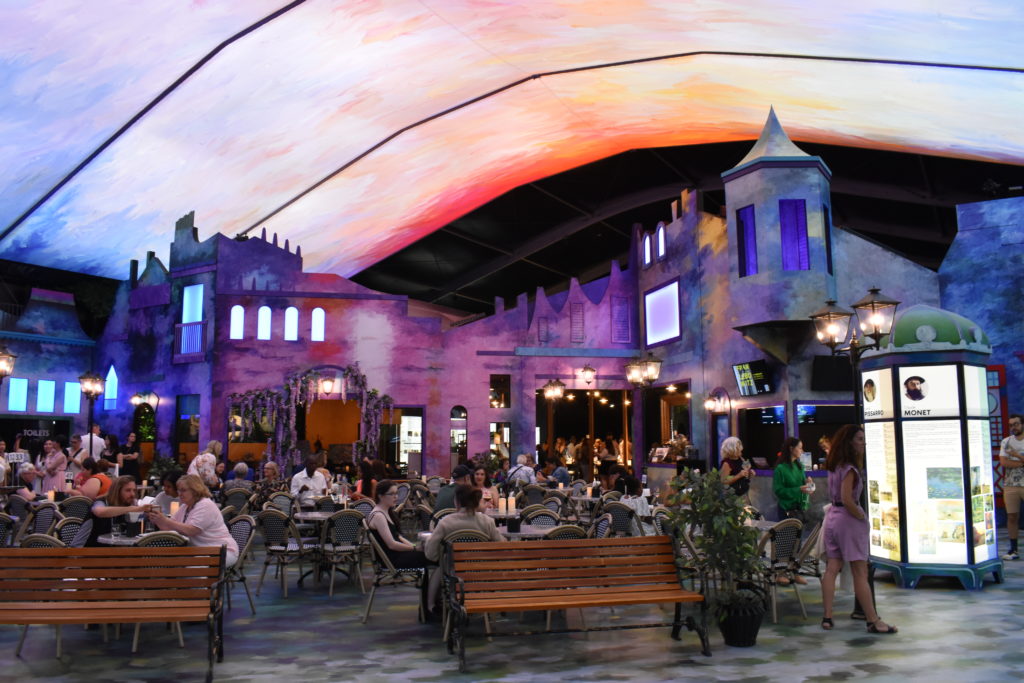
The doors open into a cavernous interior, home to a facade of what I presume are apartments. The entrance has a drinking area styled like a French café, and also includes booths printed with information pertaining to the Impressionist artists that defined the movement and influenced the exhibits.
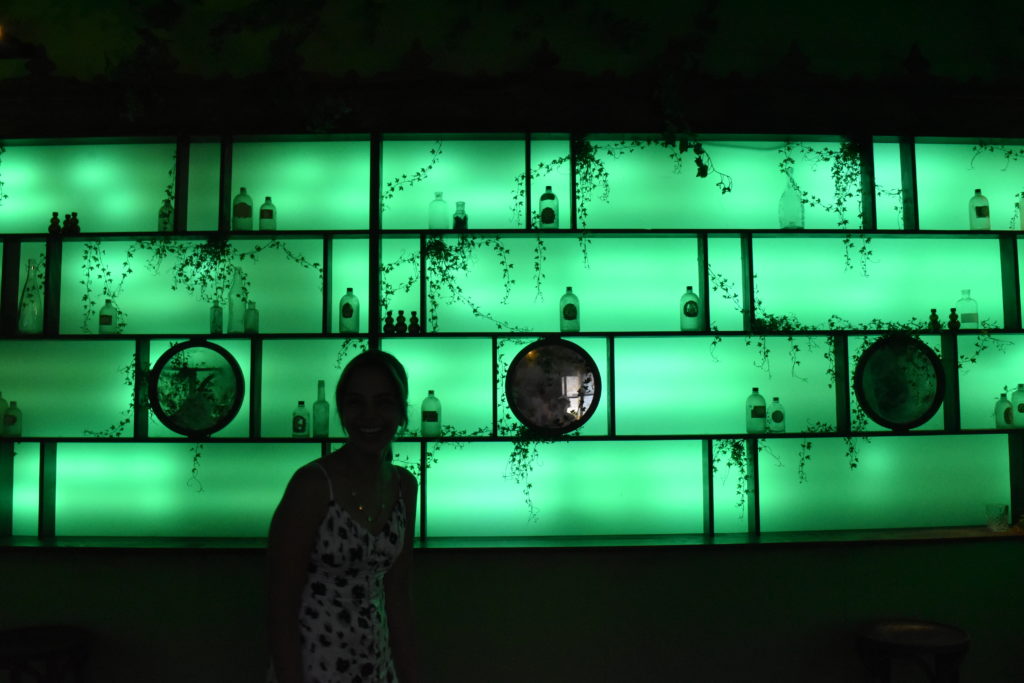
We started in an emerald green room mimicking a Belle Époque-era bar. Parisian nightlife, previously considered an unworthy subject for art, became a favourite subject of Impressionists. The green-hued surroundings invoke the spectre of absinthe, also known as ‘the Green Goddess‘, an alcoholic drink that was unfairly demonised as a highly addictive hallucinogen. It was the fashionable drink for artists at the time, and is especially associated with renowned alcoholic Henri de Toulouse-Lautrec.
Absinthe is making a comeback in the modern era, as evidenced by the presence of an absinthe fountain for sale in the gift shop!
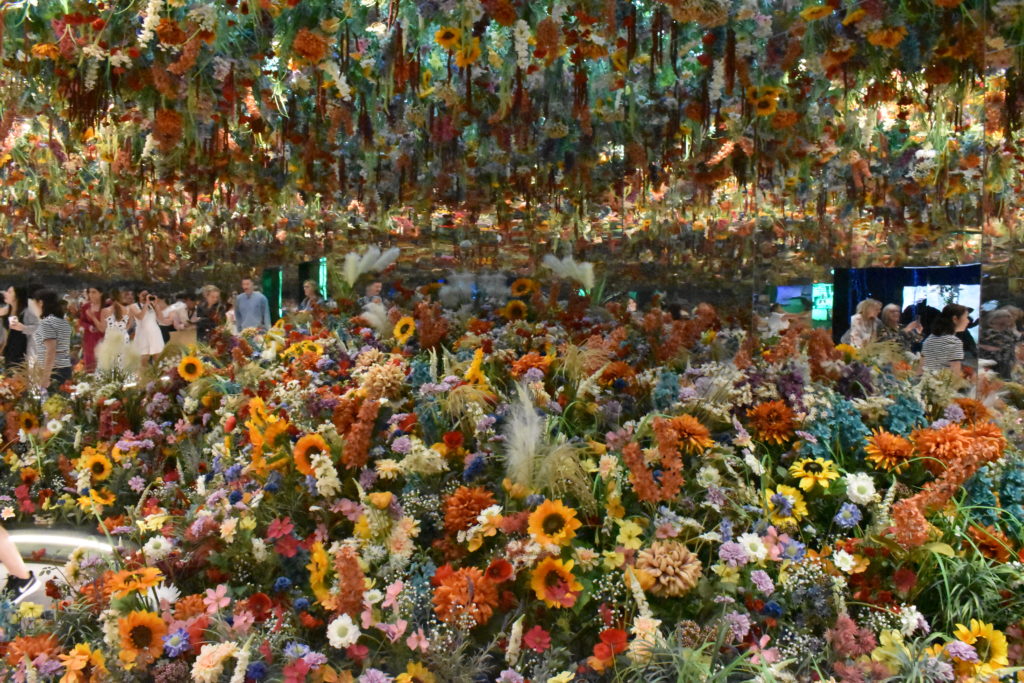
Many Impressionists were obsessed with developing a new style, which they did through painting natural landscapes. Their style revolutionised the way light and colour were used in art.
Claude Monet was one of the pioneers of Impressionism. His most famous series of paintings is Water Lilies, which, as you might have guessed, focuses on the water lilies and other flowers around his home in Giverny. The influence of Water Lilies can be felt in the rest of the installation, and as a nod to the origins of this movement, florals feature prominently in many of the exhibits.
More than that, the floral arrangements really capture the light, colours and brushstrokes that characterise the Impressionist art style.
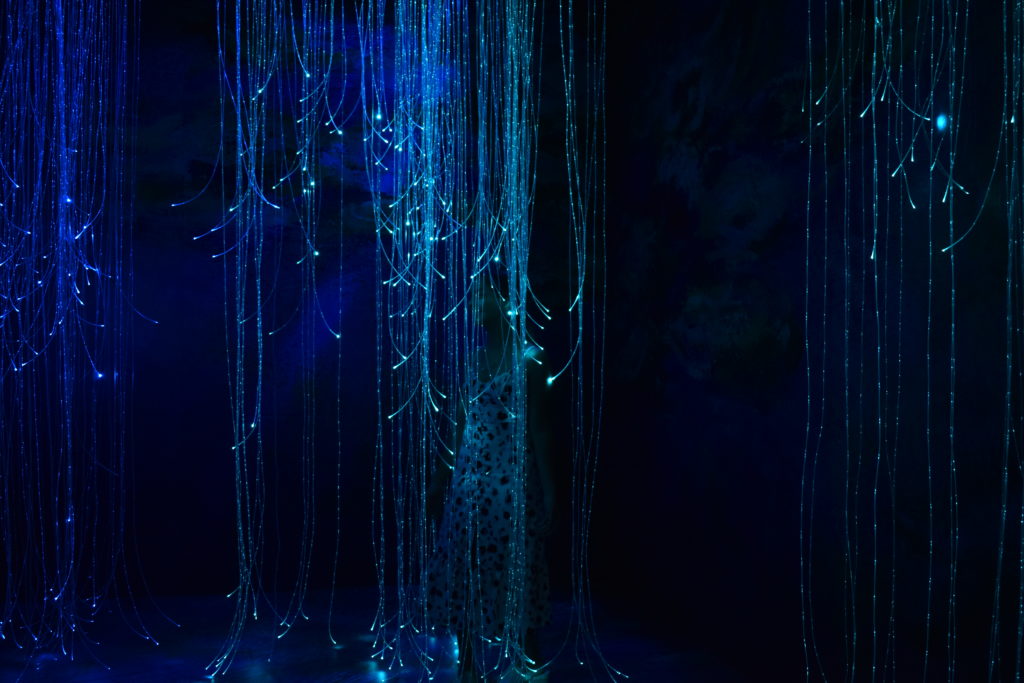
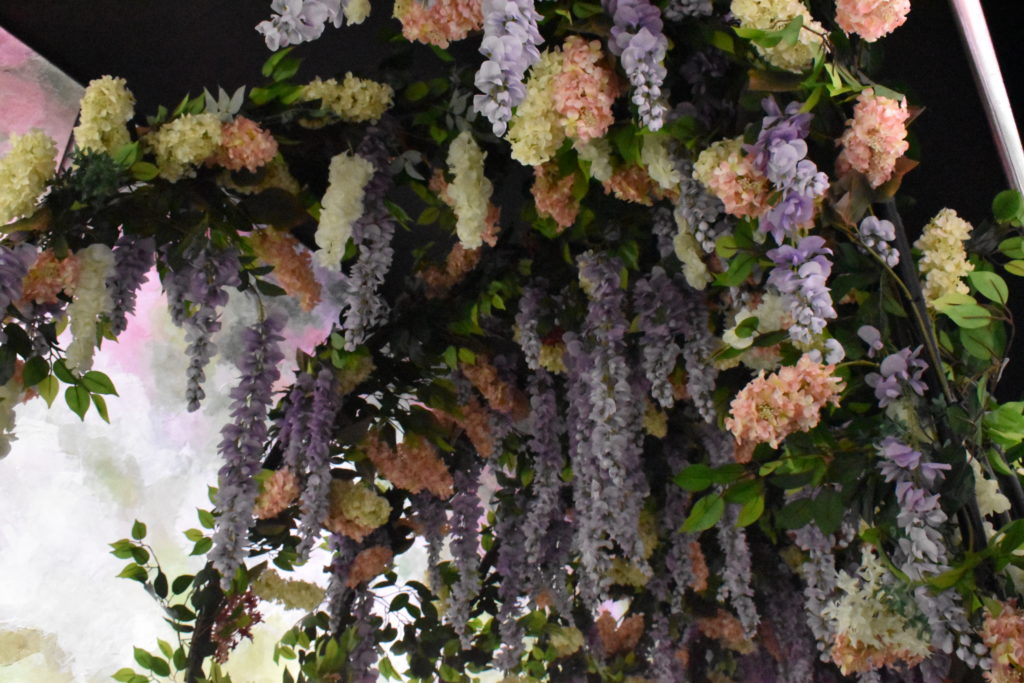
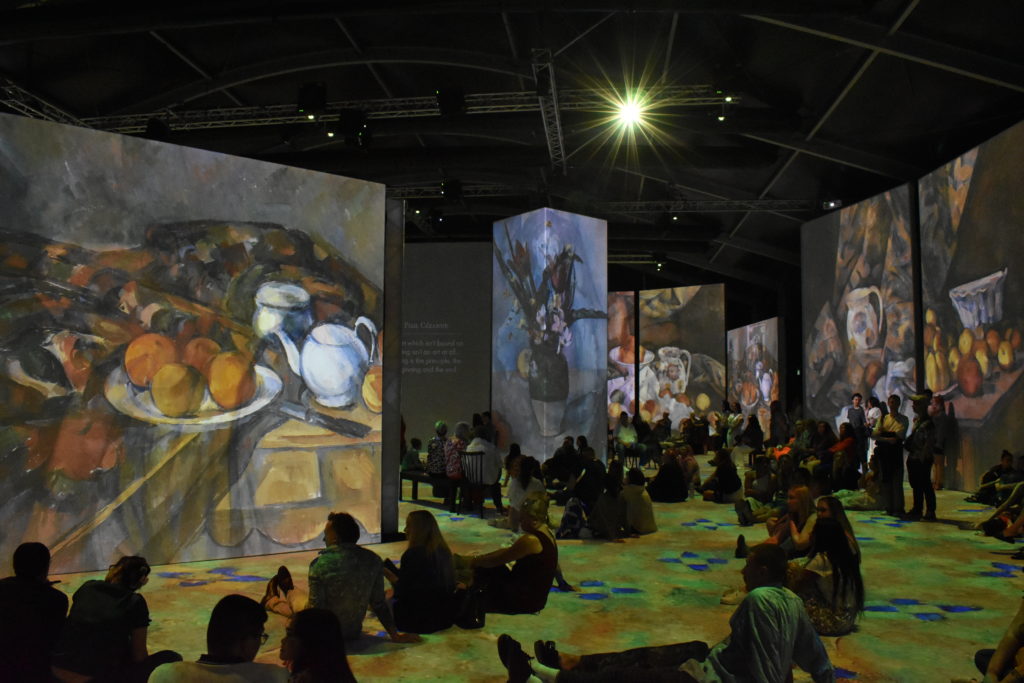
The last room, called ‘Le Grand Palais’, contained a short film incorporating quotes from the artists themselves, interspersed with their paintings and videos of nature. The distinguishing feature of the gallery is how the film is projected not just on screens around the space, but also across the floor – essentially, the viewer becomes part of the art. It was a dazzling display.
You’d be forgiven for thinking the spectacle of Le Grand Palais would be the denouement of Monet in Paris, but there is one last photo opportunity before the gift shop.
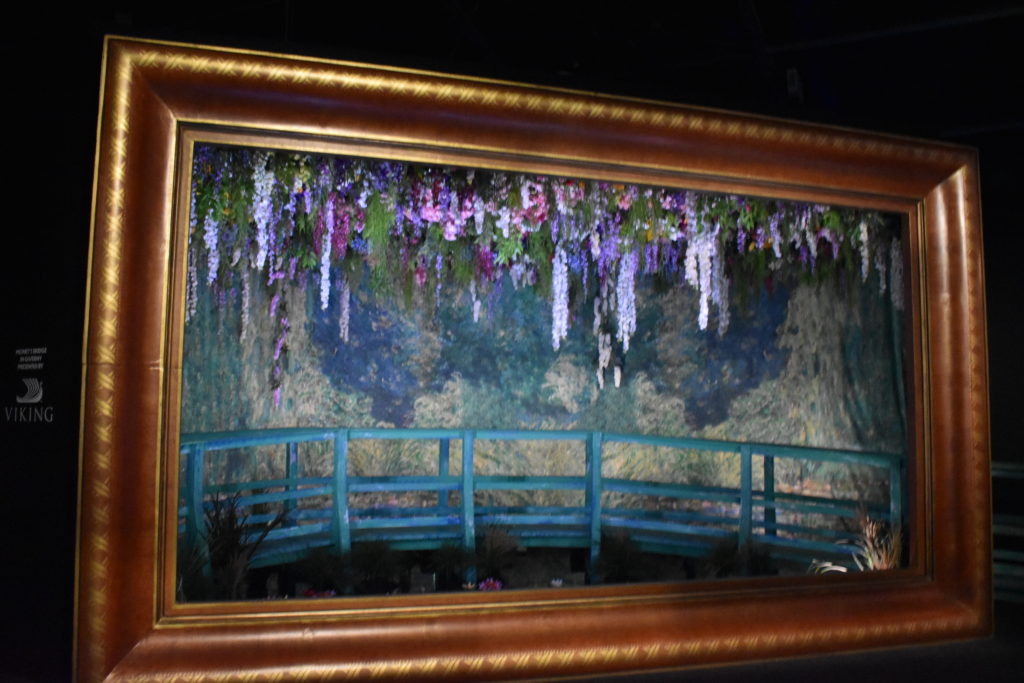
This is a more overt homage to Water Lilies. Bordered by a giant gilded picture frame and more hanging floral arrangements, a bridge overlooks water where several of the titled flowers are floating.
Lastly, a timeline greets you as you exit the Grand Palais gallery. It illustrates the major cultural, historical and technological upheavals that impacted the Impressionist movement.
The only change I would have preferred would have been to integrate the context information (as in the timeline mentioned above) into the rooms themselves, like they might have done in a museum. It would have allowed me to better appreciate how Impressionism upended artistic conventions of the time, and understand some of the rooms I was confounded by.
However, education is not really the point of Monet in Paris. It’s a dynamic visual feast, asking you merely to let yourself be carried away by the vibrant colours and whimsical concepts. An individual’s opinion on the merit of this sort of experience may vary, but the installation promised no more and no less than that – an experience. Whether the 60 AUD ticket is worth it also depends on how much value one places on that experience.
Personally, after going once, I ultimately wouldn’t go to a similar installation again. It was fun, especially as I went with my friends and we enjoyed angling for the perfect Instagram shot. But you can get the gist of the whole setup by looking through the #monetinperth hashtag on Instagram.
Still, I have to admit that room filled with flowers was really something.
